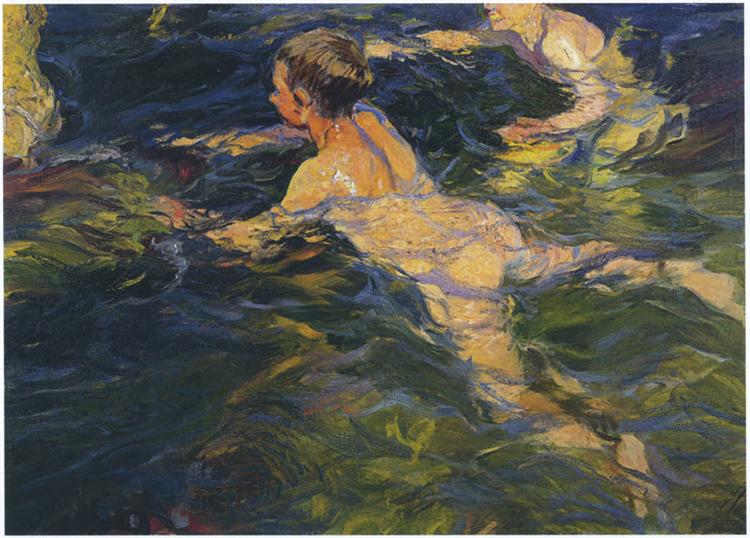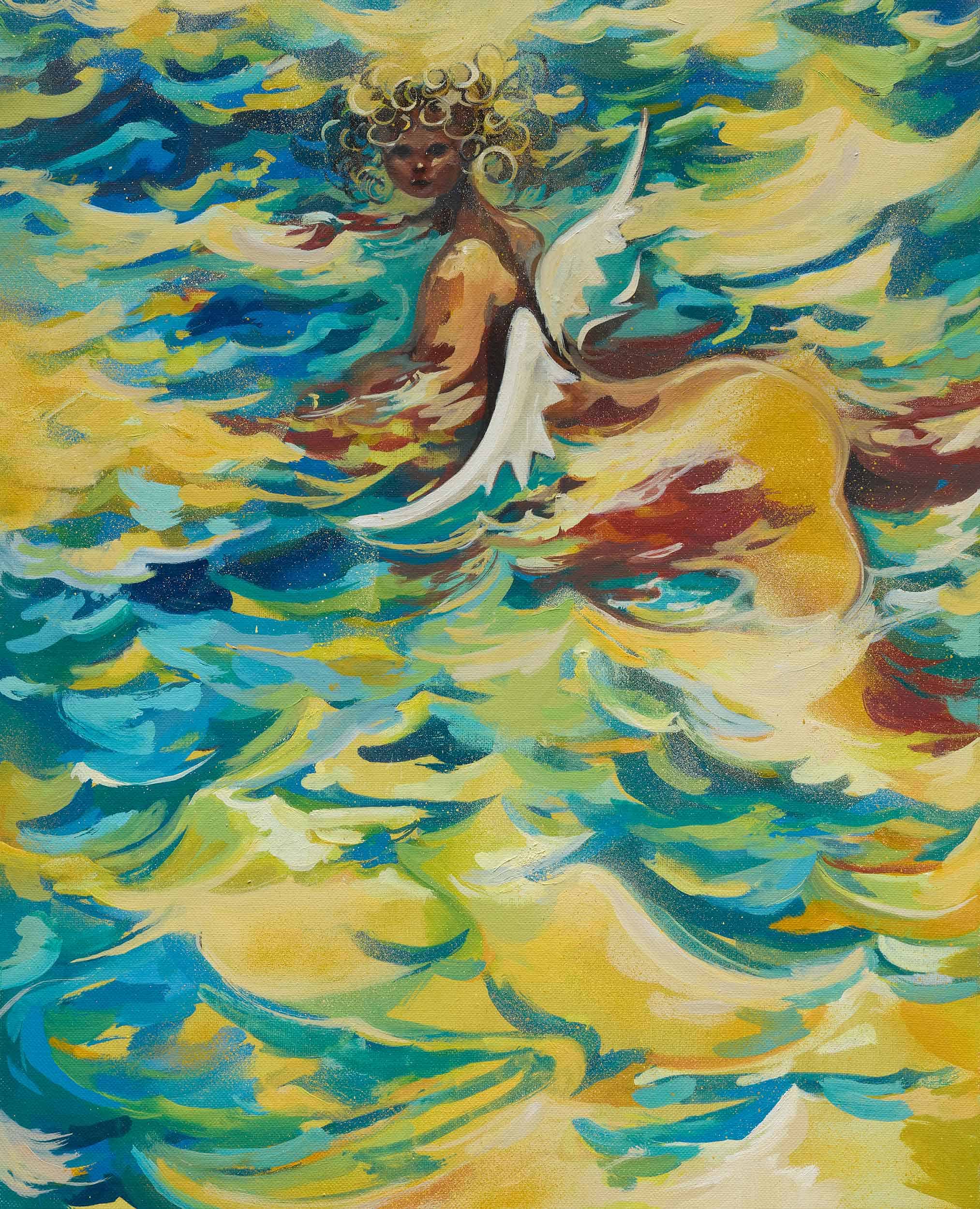
Joaquín Sorolla, "Swimmers", 1905
Capturing that which is divine or holy has eluded creators since the origins of art history. Attempting to depict this holy quality, Swimmer (After Sorolla) by Asif Hoque combines Bangladeshi symbolism with ancient Graeco-Roman myths to explore what divinity can look like in third-culture aesthetics.
Long inspired by the mythical and religious landscapes from his Bangladeshi heritage and his birthplace of Italy, Hoque paints divine scenes that exalt the brown body within traditional European religious painting. Overlaying sacred animals, mythological figures, and Bangladeshi colour symbolism onto cherubs, gods, and nymphs his pieces form a multicultural canon of spirituality.
Reimagining the painting Swimmers (1905) by Joaqíun Sorolla, a Spanish portrait and landscape painted, Hoque transforms a scene of mundane beauty into that of the divine. Awash with vivid golds, blues, and greens the waves lap at the swimming sprite, obscuring the edges of her body and merging her with the water. Far from a fallen angel, despite her lack of flight, the rich gold hue reflecting off her tanned skin and curled hair take on the role of a halo and mandorla, maintaining her celestial presence.
Surrounded by these blue-green waters, the angel of this painting, through her appearance and her surroundings, evokes Hoque’s Bangladeshi heritage. Frequently calling upon Bangladesh’s colour symbolism across his paintings, he imbues each work with an additional layer of meanings as a Renaissance painter would through religious icons. The deep blues and greens of the water for tranquility, holiness, and rebirth, the brown of her skin symbolising the Earth and fertility, and the gold hue scattering across the light within the painting representing prosperity… Swimmer (After Sorolla) recalls not only Sorolla’s Swimmers, but even Boticelli’s Birth of Venus (1485)—it at once recreates the nostalgic beauty that can be found in everyday lives and bodies and the ethereal beauty of witnessing the descent of a goddess to Earth’s waters.
Centring black and brown bodies and cultures in classical European referents, Asif Hoque creates a visual celebration of black and brown divinity, triumph, and beauty. In reimagining paintings and mythos originally created for white bodies to better reflect his own heritage, he carves out a space for multicultural identities and alternative canons within Western contemporary art and cultural experience
(By Teddy Woods)
